Xinjiang receives over 183.85 mln tourists in first 3 quarters
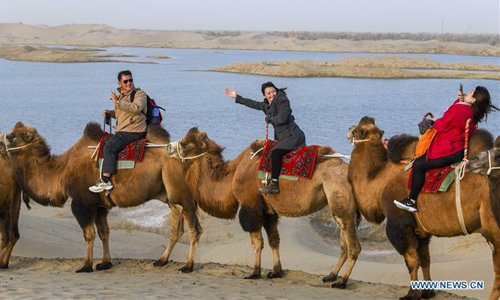
Tourists riding camels take photos beside the Shennyu Lake at Lop Nur People Village in Yuli County, northwest China's Xinjiang Uygur Autonomous Region, Oct. 26, 2019. In the first three quarters of this year, Xinjiang received over 183.85 million tourists from home and abroad with a year-on-year increase of 40.9 percent, and saw a total tourism revenue of more than 304.6 billion yuan (about 43.1 billion U.S. dollars) with a year-on-year growth of 40.78 percent. (Photo: Xinhua)
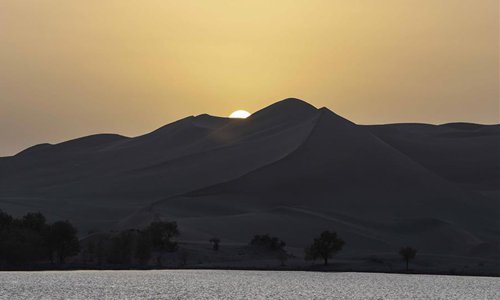
Photo taken on Oct. 25, 2019 shows the sunset scenery of Lop Nur in Yuli County, northwest China's Xinjiang Uygur Autonomous Region. In the first three quarters of this year, Xinjiang received over 183.85 million tourists from home and abroad with a year-on-year increase of 40.9 percent, and saw a total tourism revenue of more than 304.6 billion yuan (about 43.1 billion U.S. dollars) with a year-on-year growth of 40.78 percent.(Photo: Xinhua)
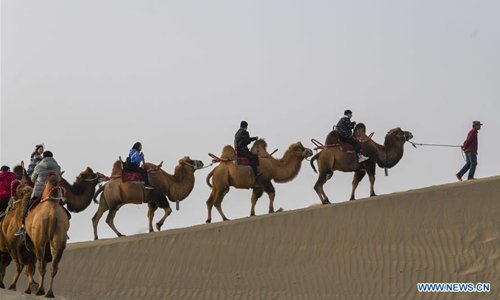
Tourists ride camels to enjoy the desert scenery at Lop Nur People Village in Yuli County, northwest China's Xinjiang Uygur Autonomous Region, Oct. 26, 2019. In the first three quarters of this year, Xinjiang received over 183.85 million tourists from home and abroad with a year-on-year increase of 40.9 percent, and saw a total tourism revenue of more than 304.6 billion yuan (about 43.1 billion U.S. dollars) with a year-on-year growth of 40.78 percent.(Photo: Xinhua)
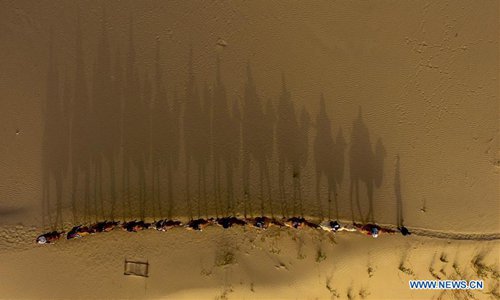
Aerial photo taken on Oct. 26, 2019 shows tourists riding camels to enjoy the desert scenery at Lop Nur People Village in Yuli County, northwest China's Xinjiang Uygur Autonomous Region. In the first three quarters of this year, Xinjiang received over 183.85 million tourists from home and abroad with a year-on-year increase of 40.9 percent, and saw a total tourism revenue of more than 304.6 billion yuan (about 43.1 billion U.S. dollars) with a year-on-year growth of 40.78 percent. (Photo: Xinhua)
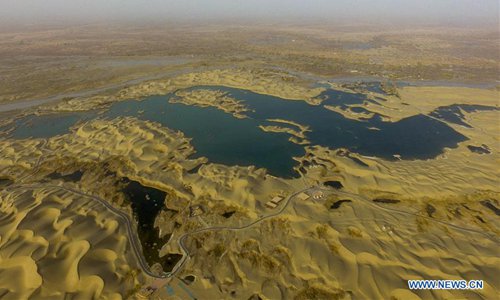
Aerial photo taken on Oct. 26, 2019 shows the scenery of Shennyu Lake scenic spot at Lop Nur People Village in Yuli County, northwest China's Xinjiang Uygur Autonomous Region. In the first three quarters of this year, Xinjiang received over 183.85 million tourists from home and abroad with a year-on-year increase of 40.9 percent, and saw a total tourism revenue of more than 304.6 billion yuan (about 43.1 billion U.S. dollars) with a year-on-year growth of 40.78 percent. (Photo: Xinhua)

Photo taken on Oct. 26, 2019 shows the scenery of the populus euphratica, commonly known as desert poplar, along the Tarim River in northwest China's Xinjiang Uygur Autonomous Region. In the first three quarters of this year, Xinjiang received over 183.85 million tourists from home and abroad with a year-on-year increase of 40.9 percent, and saw a total tourism revenue of more than 304.6 billion yuan (about 43.1 billion U.S. dollars) with a year-on-year growth of 40.78 percent. (Photo: Xinhua)
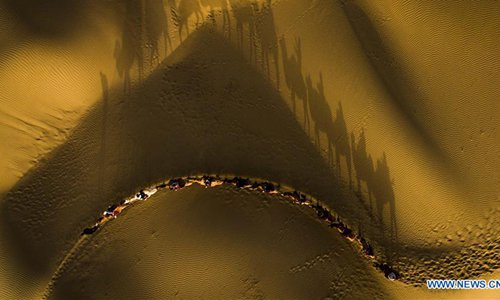
Aerial photo taken on Oct. 26, 2019 shows tourists riding camels to enjoy the desert scenery at Lop Nur People Village in Yuli County, northwest China's Xinjiang Uygur Autonomous Region. In the first three quarters of this year, Xinjiang received over 183.85 million tourists from home and abroad with a year-on-year increase of 40.9 percent, and saw a total tourism revenue of more than 304.6 billion yuan (about 43.1 billion U.S. dollars) with a year-on-year growth of 40.78 percent. (Photo: Xinhua)
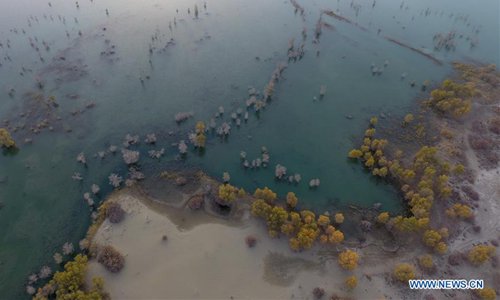
Aerial photo taken on Oct. 26, 2019 shows tourists riding camels to enjoy the desert scenery at Lop Nur People Village in Yuli County, northwest China's Xinjiang Uygur Autonomous Region. In the first three quarters of this year, Xinjiang received over 183.85 million tourists from home and abroad with a year-on-year increase of 40.9 percent, and saw a total tourism revenue of more than 304.6 billion yuan (about 43.1 billion U.S. dollars) with a year-on-year growth of 40.78 percent. (Photo: Xinhua)